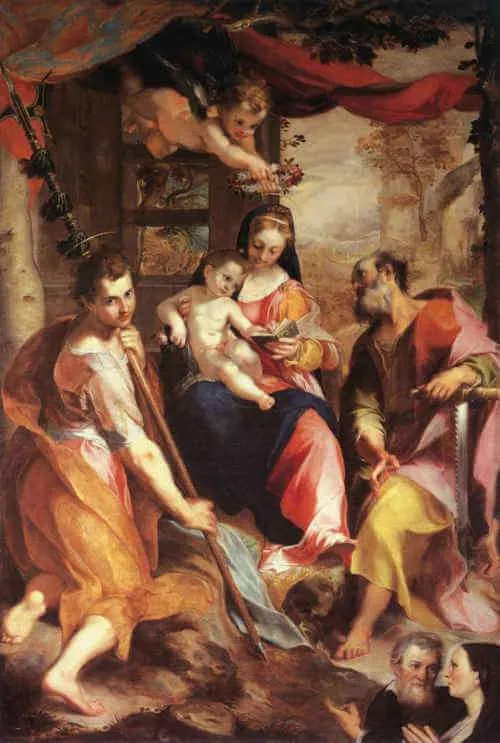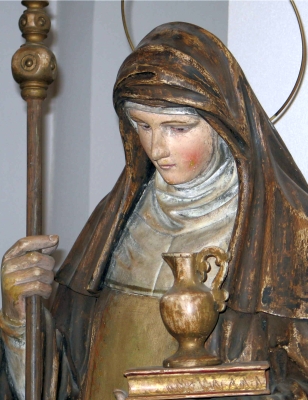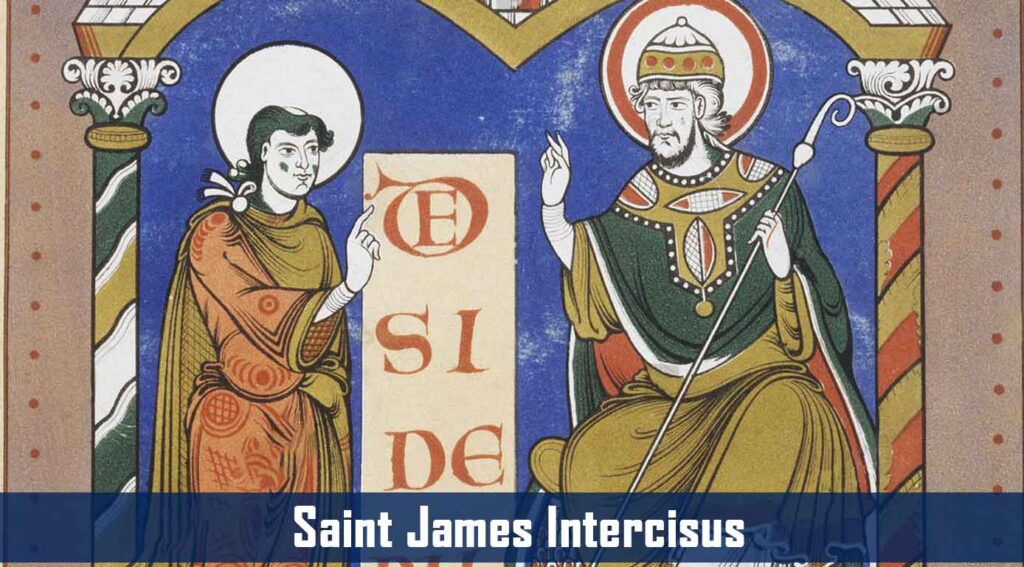First Century; Patron Saint of curriers, woodcutters, and tanners (Simon); hopeless causes and hospital workers (Jude); Pre-Congregation canonization
Today, the Church honors Saints Simon and Jude, two of the Twelve Apostles chosen by our Lord. They were two of the first bishops through whom our Lord established His Church and from whom every bishop, priest, and deacon is a spiritual descendant.
Very little is known about these two Apostles, other than what is briefly mentioned about them in the New Testament, and even that is a little confusing. They are both listed among the Twelve whom Jesus names Apostles: Matthew 10:2–4; Mark 3:16–19; Luke 6:13–16; Acts 1:13.
Today’s Simon is not Simon Peter, the Prince of the Apostles, but rather “Simon the Cananean” (Matthew and Mark) and “Simon the Zealot” (Luke and Acts). Both names mean the same thing. “Cananean” does not refer to the Land of Canaan but is a translation of an Aramaic word meaning “zealous.”
It’s interesting to note that Jesus chose a variety of different people as His Apostles. Perhaps the most stark contrast is found between Simon the Zealot and Matthew the tax collector. As a zealot, Simon would have been very committed to his Jewish identity and would have been firmly opposed to Roman oppression and taxation. He would have had an immediate aversion to Matthew, who previously served the Romans by collecting taxes for them from the Jews. The fact that Jesus did not choose like-minded Apostles shows His inclusion of all people. Jesus did not have a favorite type of person. He was not bound by cultural ties, ideologies, or social classes. He was not nationalistic in the sense of being a separatist or isolationist. He was interested in all people, those of every background and experience, and His Apostles reveal that fact. Jesus might have chosen Simon because He wanted to reach out to those who were firmly committed to their Jewish heritage, traditions, and beliefs, and Simon was able to reach those people.
Jude is referred to as “Judas son of James” (Luke and Acts) and “Thaddeus” (Matthew and Mark). The only other reference that is certain about Jude comes from John’s Gospel during the Last Supper in which Jude is referred to as “Judas, not the Iscariot…” (John 14:22). During the Last Supper, Jesus compassionately instructed His Apostles that He would soon be leaving them, but they should have courage and wait for His Advocate, the Holy Spirit. Jude, expressing a bit of confusion, asked Jesus, “Master, [then] what happened that you will reveal yourself to us and not to the world?” In other words, Jude was asking Jesus why He doesn’t just manifest His divinity to everyone, in a clear and convincing way, so that they will all believe in Him. Jesus’ answer is mysterious, but He essentially points out that belief in Him must come by the inspired gift of faith, and that obedience to that faith, and to the will of God, will result in divine union.
There is also a reference in two of the Gospels identifying Simon and Jude as Jesus’ brothers: “Is he not the carpenter’s son? Is not his mother named Mary and his brothers James, Joseph, Simon, and Judas?” (Matthew 13:55; Mark 6:3). However, most scholars today believe these two are not the same as the Apostles but are cousins of Jesus. It was custom at that time to refer to one’s cousin as brother or sister. It is possible that the Judas identified as Jesus’ brother is the author of the Epistle of Jude in the New Testament, rather than the Apostle. However, that point is debated, and even Pope Benedict XVI at a General Audience in 2006 pointed to the tradition that the Epistle of Jude was, indeed, written by the Apostle. If that’s the case, then it might be that these two Judes are one and the same.
Regarding their deaths, nothing is known other than unreliable apocryphal sources, such as the Passion of Simon and Jude, and other fourth-century and later sources. One of the most common traditions is that Simon and Jude traveled to Persia to preach the Gospel and were both killed there in the year 65. Simon is traditionally believed to have been sawed in half, and Jude is traditionally believed to have been beaten with a club. They often appear in sacred art holding the instruments of their deaths. Other traditions state they ministered in Armenia, Beirut, Lebanon, Roman Britain, Egypt, and/or Samaria and died by arrows, crucifixion, and even a peaceful death.
The Epistle that has been traditionally attributed to Saint Jude the Apostle is a short but passionate letter in which he warns all Christians against immorality and heresy trying to enter the early Church. Some suggest it is for this reason that he is named Patron Saint of Hopeless Causes, because of his passionate plea. Another tradition states that because Jude shared a name with Judas Iscariot, the betrayer, Saint Jude’s intercession was rarely sought. However, after the intercession of every other Apostle and saint was sought, people in the early Church would turn to Saint Jude as their last hope. There are many ancient traditions holding that Saint Jude has provided many miracles throughout the centuries.
As we honor these Apostles, what we know for certain is that they were instrumental in the early Church. Being among the first bishops, they bore the sacred responsibility of transmitting the Sacraments and the teachings of Jesus to a nascent Church. One day in Heaven, we will see clearly the effects of their pastoral ministry. Today, we rejoice in what we do not fully know, trusting that their lives gave great glory to God and won the salvation of many souls.
Source: https://mycatholic.life/saints/saints-of-the-liturgical-year/october-28–sts-simon-and-jude/








